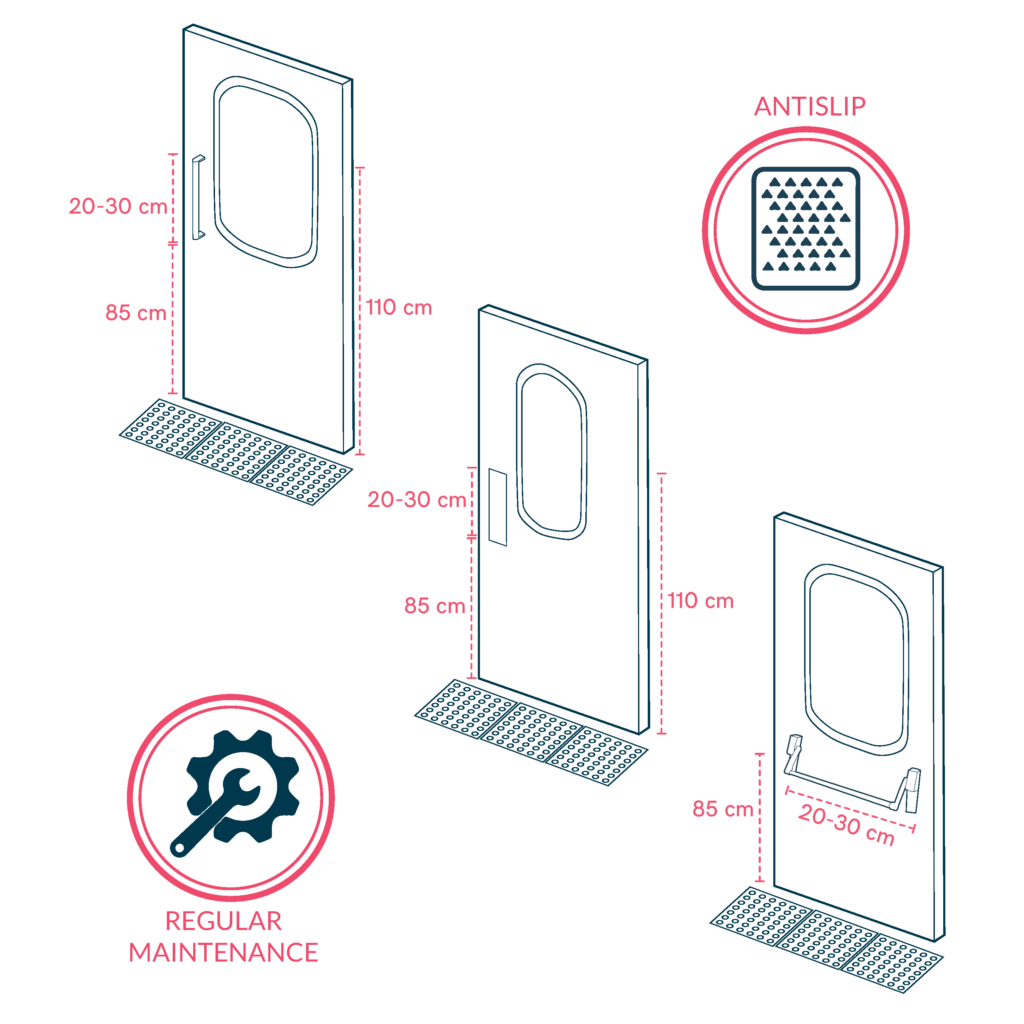Handles, Pulls, and Latches for Inclusive Design
Handles, pulls, and latches should be designed for effortless and intuitive operation, ensuring accessibility for individuals with reduced strength, dexterity, or mobility. In inclusive environments, not only should doors be easy to open and close, but users should also immediately understand whether they need to push or pull — avoiding confusion and hesitation. This can be communicated through clear signage, the shape or design of the handle itself, or the door’s material and visual cues. Additionally, surfaces around the door — especially the floor — should support safe use, with non-slip materials that reduce the risk of falling during door operation.

- Use lever-style handles (not round knobs) for better grip, with lengths of 20–30 cm and high contrast against the background.
- Install handles at a universal height between 85–110 cm for comfortable reach.
- Ensure push or pull actions are clearly communicated through visual cues, such as arrows, labeling, or intuitive handle shapes.
- Select handles with non-slip finishes, smooth edges, and no sharp elements, ensuring they are comfortable and safe to use.
- Doors should require minimal force to open and close; hinges and closing systems must be properly adjusted to support ease of use.
- Include auxiliary pull handles inside doors to help users close them, especially those with reduced reach.
- Use simple locking systems that support one-handed operation, with emergency release mechanisms accessible from outside.
- Ensure the floor surface near doors is non-slip, reducing the risk of falls while entering or exiting.
- Perform regular checks and maintenance to ensure all elements function smoothly and reliably.
- Where appropriate, provide keyless or electronic options for users with cognitive or motor impairments.
Sources
- https://accessible-eu-centre.ec.europa.eu/content-corner/digital-library/en-172102021-accessibility-and-usability-built-environment-functional-requirements_en
- https://www.access-board.gov/adaag-1991-2002.html#2.%20GENERAL
- https://universaldesign.ie/built-environment/building-for-everyone/building-for-everyone-full-series
- https://www.codigotecnico.org/pdf/Documentos/SUA/DccSUA.pdf
